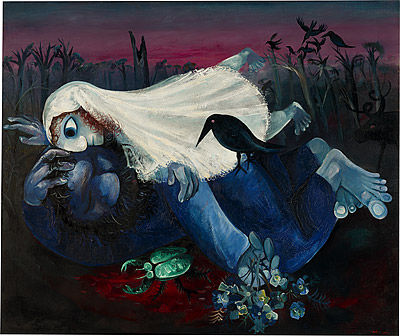Something that lasts: The gulf between populism and greatness in Australian art
- Andrew McIlroy
- Jan 30, 2019
- 4 min read

Ever since Australia officially became a multicultural nation in the 1980's, there have been attempts to show that 'truly relevant and energetic creative art comes from working across cultures'. And while this makes for a vibrant, enriched and engaged society, it is of concern that public arts policy is founded here on making art truly relevant, or to use another term, 'popular'. Not only has an opportunity to support the creation of great and lasting art been lost, this push has instead resulted in a generation of artists that for the most part pursue populist themes, rather than strive to create more enduring works.
The tension between being popular, finding fame in and beyond a competitive commercial art market on the one hand, and creating works that will endure on the other has never gone away. The view that greatness emanates from the enduring nature of things is still tightly held across many fields of endeavour, including the arts, only to face the pressures and prejudices of a modern society.
This tension has come to dominate the artist’s thinking. An innate, personal and at times torturous quest for an exalted place that perhaps means that many artists never break through to fully rise to their potential.
So, what is the true path to artistic success? Well, the answer is of course many and varied.

Art in the highest sense in universal: Arthur Boyd, 'Dreaming bridegroom II' (1958) Photo: Bundanon Trust / National Gallery of Australia, Canberra

Great art endures: Sydney Nolan, 'The Camp' (1946)
However, it is widely held that for art to be truly appreciated it must touch the heart, touch the mind, and touch the soul. But, great art requires more - what I call, the third element. It must point to something higher, or deeper - something that is transformational, if you will - or risk being taken as fanciful and short-lived.
The stark reality today is that most people do not respond to high art. Many artists then, fueled by the surreal 'like-me' world of social media, are focused on the pursuit of popularity, among a broader audience. For many, the realisation that high art or great art will never be popular seems lost. While it will always be a minority taste, great art will be loved and nurtured and furthered by that minority.
Yes, art is all around us. In music. In architecture. In film and on television. In the natural world we inhabit. We encounter art every day. But some people are artistic-minded, and other people are not. Just as some people are attuned to the natural world, other people are not. Inevitably, people always want other people to like what they like, to popularise their belief to a larger audience. Art lovers are always going to struggle to form a critical mass despite the apparent abundance of art.
This is the existential dilemma for the artist. The art-loving or art-conscious audience is small. It will always be there, but it will never be big. Should artists then focus their existence on becoming popular - achieved by few - or on creating high art?
Does art need to be relevant to a person's life in order to be appreciated?
I have long struggled with the concept of ‘relevance’ in art. What does it mean? Michelangelo Merisi da Caravaggio’s, ‘The Calling of Saint Matthew’ and 'Judith Beheading Holofernes' are great paintings, but are they relevant? I think art in all its forms can be liked, loved and appreciated. It instructs us and consoles us. Thrills us and lifts us. But this enthusiasm should not be mistaken for relevance.
For me, it is a distortion of art to think that it must be relevant, political or doctrinal to a modern-day audience to matter.

Michelangelo Merisi da Caravaggio, ‘The Calling of Saint Matthew'
Artists across every century since Caravaggio have conceitedly claimed that art has to be different, that art has to speak to the modern audience. Yet the best art speaks for all time and is timeless. It is simply beyond time and place. It is not fixed to or merely relevant to its time. In this way, it will continue to find new audiences as societies change and evolve.
In this way, great art is independent of race, cultural divides and gender. It is not best viewed through the plight, race or social standing of the person behind it. It is not subject to fashions or the whims of art bureaucrats. I think that art in the highest sense is universal - great art can be enjoyed, loved, no matter who produces it.
The debate in Australian art will be enhanced by the recognition of one undeniable truth. The art market is small. Appeasing a small audience should not keep an artist awake at night. True artists live to make things. Their life-giving force should be to make something great, something that lasts.

Michelangelo Merisi da Caravaggio, 'Judith Beheading Holofernes' (1599-1602) Photo: Galleria Nazionale d'Arte Antica

Timeless: Frederick McCubbin, 'The Pioneer (1904) Photo: NGV
Main Photo: Adnate, 'Far Nearer III' Photo: Nanda Hobbs, Sydney
Andrew McIlroy is a visual artist and arts writer, living and working in Melbourne, Australia



Comments